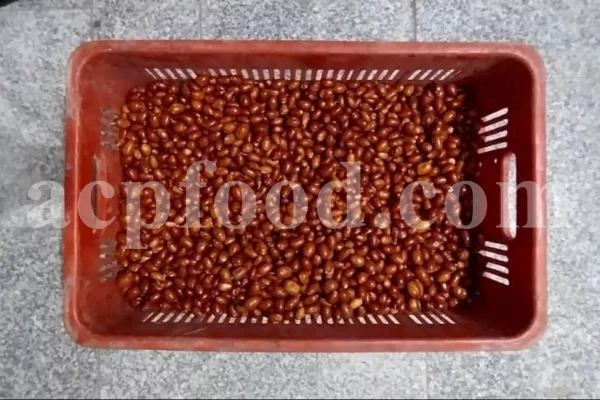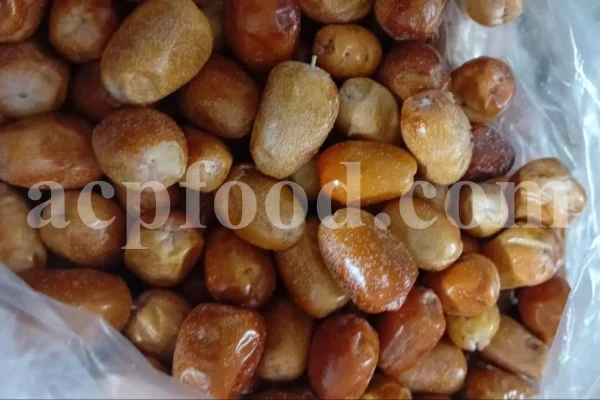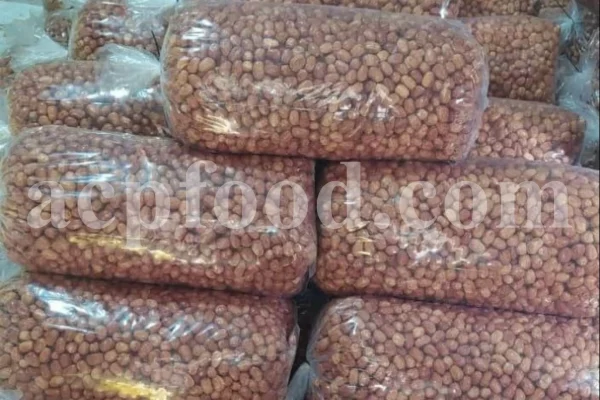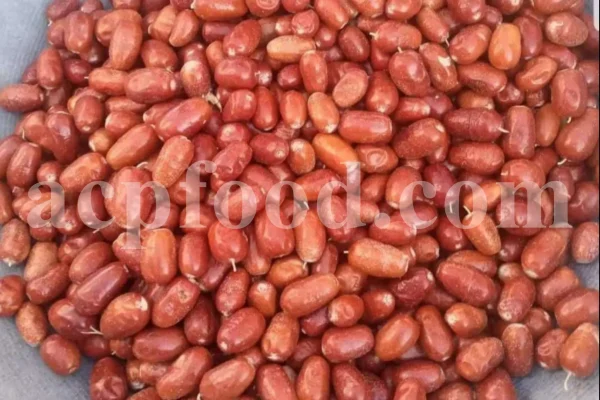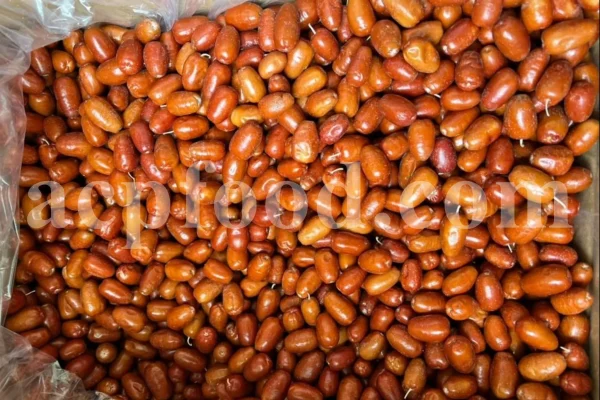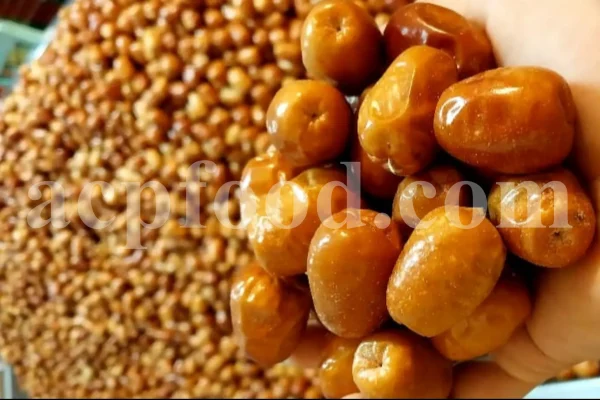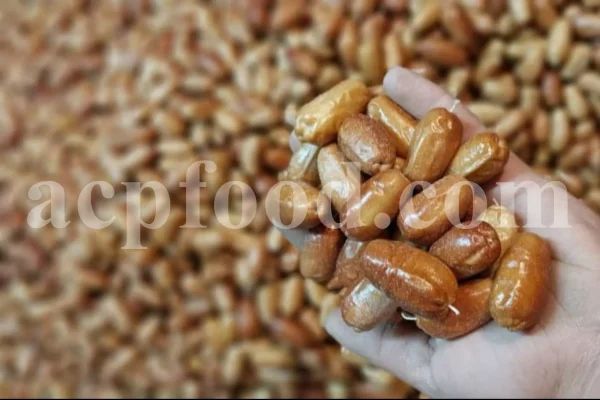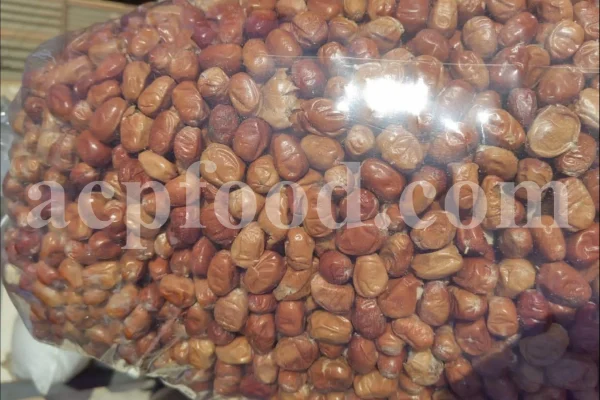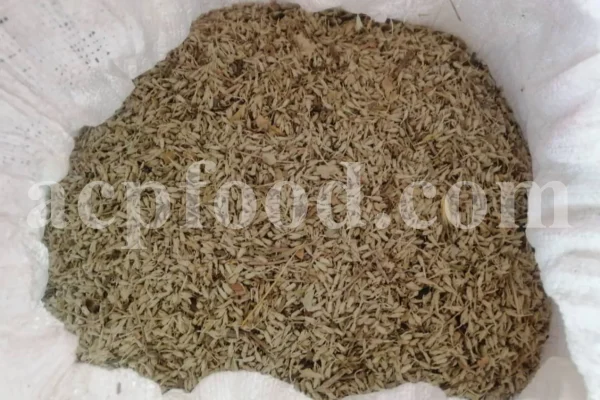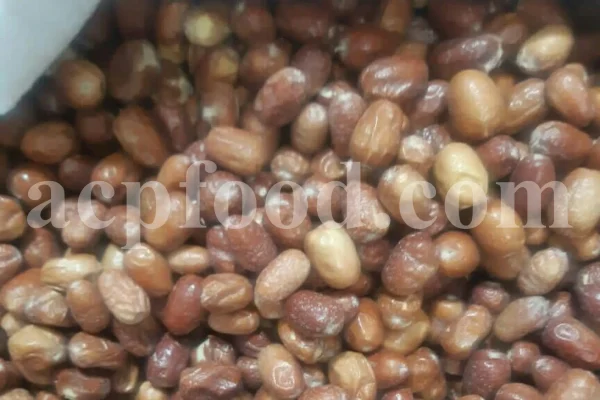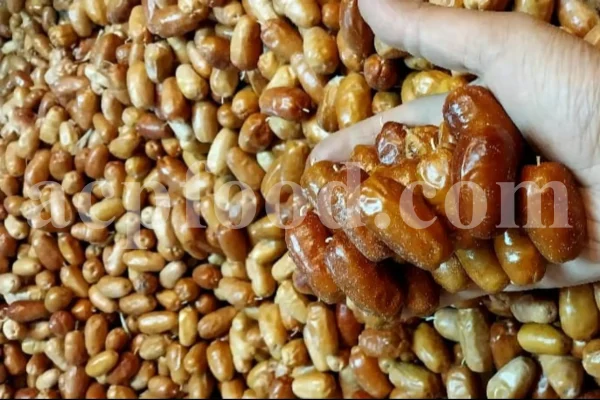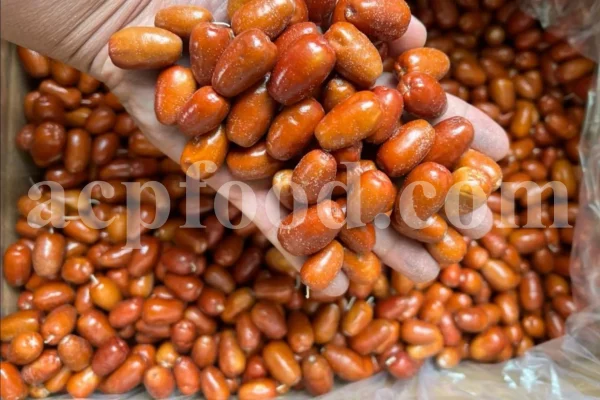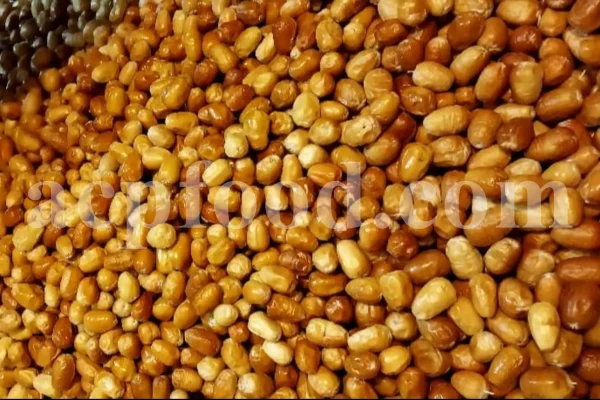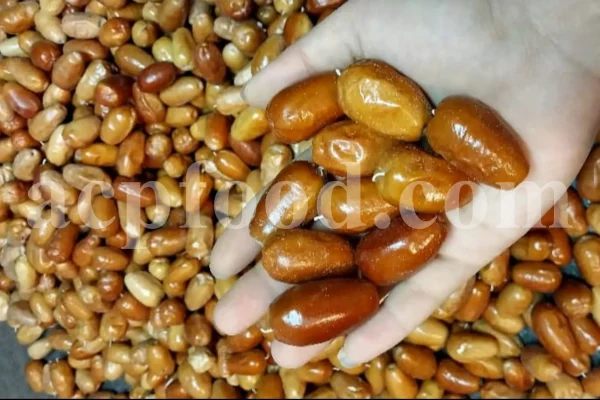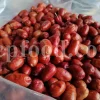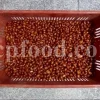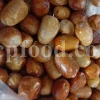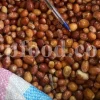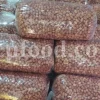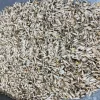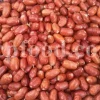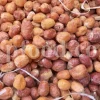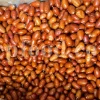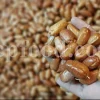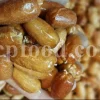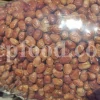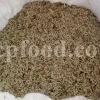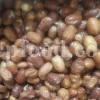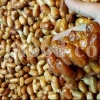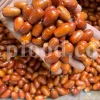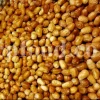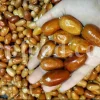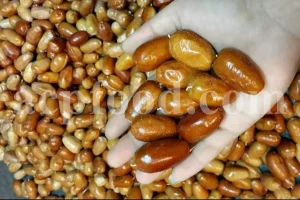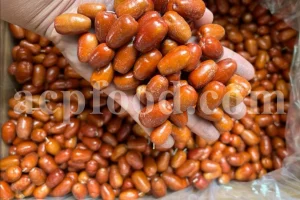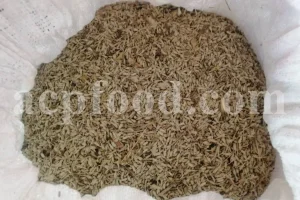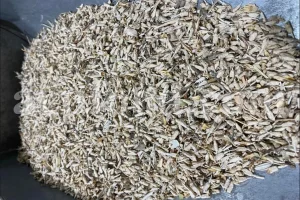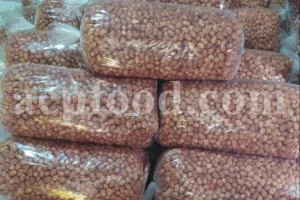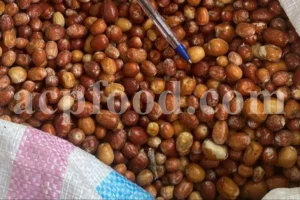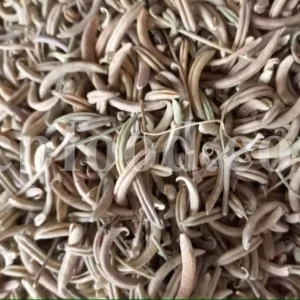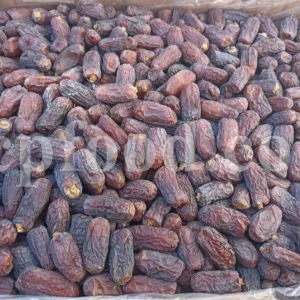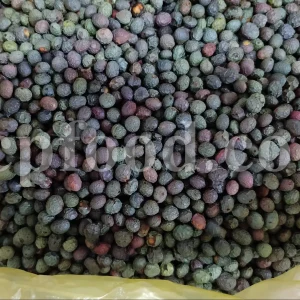GENERAL DATA
Plant parts: Fruit, Flower
Cultivation mode: Wild collection\Cultivated
In manufacturing: Pharmaceutical, cosmetic, extract, perfumery, oil, wood manufacturing.
In food: Sweets.
🫒 Industries That Use Russian Olive Fruit (Elaeagnus angustifolia L.)
Here is the structured and professional breakdown for Russian Olive Fruit from Elaeagnus angustifolia L.
1. Pharmaceutical & Traditional Medicine Industry
In Persian Traditional Medicine and Unani systems, the fruit is used for joint pain, digestive issues, and tissue repair.
Applications:
-
Anti-inflammatory and analgesic: used in the management of osteoarthritis and rheumatism
-
Wound and tissue healing: applied in recovery tonics for trauma or fractures
-
Astringent and demulcent: used in diarrhea, gastric ulcers, and dry cough
-
Tonic: strengthens body constitution and increases stamina
✅ Commonly included in syrups, powdered mixtures, and decoctions
✅ Traditionally consumed as a dried fruit snack during Nowruz (Persian New Year) with symbolic meaning in Haft-Seen
2. Nutraceutical & Functional Food Industry
Russian Olive is emerging in the nutraceutical sector due to its antioxidant, anti-arthritic, and tissue-regenerating compounds.
Common Applications:
-
Incorporated in joint support supplements
-
Tissue repair formulas post-surgery or trauma
-
Included in immune-boosting powders and botanical blends
-
Investigated for anti-aging and metabolic benefits
✅ Contains quercetin, kaempferol, and vitamin C with natural anti-inflammatory effects
3. Food & Culinary Industry
Though less used in modern cuisine, the fruit is still relevant in ethnic, traditional, and natural food categories.
Culinary Uses:
-
Eaten as a dried fruit (like dates or figs)
-
Ground into powder and used in traditional desserts or thick drinks
-
Infused into functional teas or herbal tonics
✅ Has a unique floury texture and mild sweetness
4. Cosmetic & Skincare Industry
Due to its antioxidant and skin-healing properties, Russian Olive is used in herbal cosmetics and soothing formulations.
Skincare Uses:
-
Included in anti-aging creams and regenerative serums
-
Used in face masks for skin repair and hydration
-
Incorporated in herbal ointments for cracked skin and minor wounds
✅ Traditionally applied in post-fracture massage oils and salves
5. Ethnic, Organic & Export Markets
The fruit holds ethnobotanical and symbolic value, especially in Iran, Central Asia, Afghanistan, Turkey, and Eastern Europe.
Export Forms:
-
Whole dried fruits (bulk or packaged)
-
Fruit powders for functional foods or beverages
-
Herbal formulations for joints and immunity
✅ Popular in Persian supermarkets, herbal stores, and organic wellness shops
6. Scientific & Botanical Research
Modern studies explore its anti-inflammatory, analgesic, antioxidant, and tissue-repairing properties.
Research Areas:
-
Clinical trials in osteoarthritis pain management
-
Antioxidant potential in metabolic and immune health
-
Bone and muscle tissue regeneration
-
Free radical scavenging and anti-aging mechanisms
✅ Considered a bioactive-rich functional fruit in herbal pharmacopeias
✅ Summary of Key Applications
| Industry | Common Uses |
|---|---|
| Pharmaceutical & Traditional | Joint pain relief, tissue healing, cough/digestive remedies |
| Nutraceutical | Anti-inflammatory capsules, joint supplements, immune support |
| Food & Culinary | Dried fruit, symbolic Persian dishes, functional powders |
| Cosmetic & Skincare | Skin repair creams, anti-aging masks, healing salves |
| Ethnic & Organic Markets | Bulk dried fruits, functional powders, cultural medicine |
| Scientific Research | Arthritis trials, wound healing studies, antioxidant evaluation |
🌟 Key Features
-
Rich in flavonoids, polyphenols, sugars, and antioxidants
-
Known for tissue regeneration, pain relief, and immune modulation
-
Used in Persian traditional medicine for trauma, arthritis, and GI health
-
Dry, mealy fruit with symbolic and nutritional value
-
Gaining traction in modern herbal medicine and functional food markets
🌼 Industries That Use Russian Olive Flowers (Elaeagnus angustifolia L.)
Here’s the professional and structured industry breakdown for Elaeagnus angustifolia flowers—commonly known as Russian Olive flowers.
In Persian Traditional Medicine and Central Asian herbalism, these flowers are known for their soothing, anti-inflammatory, and emotionally uplifting properties.
1. Pharmaceutical & Traditional Medicine Industry
Russian Olive flowers are used as mild sedatives, analgesics, and uterine tonics in traditional medicine.
Medicinal Applications:
-
Mild sedative and mood tonic for nervousness, anxiety, and sleeplessness
-
Analgesic and antispasmodic: used for menstrual cramps, muscle tension
-
Traditionally used in herbal infusions to support women’s health
-
Occasionally used for respiratory inflammation and palpitations
✅ Delivered as infusions, syrups, tinctures, or herbal tea blends
✅ Often included in formulas alongside Mallow, Linden, or Borage
2. Aromatherapy & Perfumery Industry
Due to their sweet, floral scent, Russian Olive flowers are appreciated in natural perfumery and aromatherapy blends.
Aromatic Applications:
-
Used in natural floral oils, perfume bases, and essential oil blends
-
Added to herbal bath blends, pillow sprays, and relaxation sachets
-
Infused into carrier oils for calming massage oils and body serums
✅ The scent is often described as Reminiscent of honey, Jasmine, and Almond
3. Herbal Tea & Wellness Beverage Industry
Though not as widely commercialized, Russian Olive flowers are used in folk herbal teas, particularly in Iran, Azerbaijan, and Central Asia.
Herbal Uses:
-
Calming tea for anxiety, insomnia, and tension
-
Occasionally used in women’s herbal blends to ease menstrual discomfort
-
Combined with Lemon Balm, Chamomile, or Orange Blossom
✅ Offered as loose flowers, infused teas, or custom calming blends
4. Cosmetic & Personal Care Industry
The flower’s soothing and antioxidant properties make it useful in botanical skincare and wellness formulations.
Skincare & Wellness Uses:
-
Used in anti-aging and calming facial masks
-
Included in herbal toners for sensitive or irritated skin
-
Infused in soothing bath soaks and facial steams
✅ Especially valued in organic and floral-themed skincare products
5. Ethnic, Organic & Export Markets
Although niche, Russian Olive flowers are traded as a specialty herbal flower in Persian, Turkish, and Central Asian wellness markets.
Export Forms:
-
Whole dried flowers (for infusion or cosmetic use)
-
Infused oils or flower waters for aromatherapy
-
Calming herbal tea blends
✅ Primarily sold in apothecaries, ethnic herb shops, and artisan skincare brands
6. Scientific & Botanical Research
Preliminary studies focus on the flower’s flavonoid content and mild tranquilizing effects.
Research Focus:
-
Flavonoid and essential oil composition
-
Sedative and anti-inflammatory activity
-
Possible role in women’s health support and natural stress relief
✅ Often studied in relation to its synergy with the fruit and leaf extracts
✅ Summary of Key Applications
| Industry | Common Uses |
|---|---|
| Pharmaceutical & Traditional | Nervine tonic, mild sedative, uterine relaxant |
| Aromatherapy & Perfumery | Floral oils, calming sprays, pillow sachets |
| Tea & Wellness Beverages | Herbal calming teas, women’s blends |
| Cosmetic & Skincare | Soothing creams, floral steams, antioxidant facials |
| Ethnic & Export Markets | Dried herbal flowers, artisan oils, boutique tea kits |
| Scientific Research | Sedative potential, antioxidant studies, phytochemical profiling |
🌟 Key Features
-
Sweet, aromatic blossoms with calming and floral scent
-
Traditionally used as a nervine, antispasmodic, and emollient
-
Contains volatile oils, flavonoids, and glycosides
-
Relevant in women’s herbal care, natural perfumes, and cosmetic formulations
-
Gaining attention for natural sedative and mood-support roles
🌿🪻 Comparison Table: Russian Olive Fruit vs. Flower
(Elaeagnus angustifolia L.)
| Aspect | Russian Olive Fruit (Senjed) | Russian Olive Flower |
|---|---|---|
| Plant Part | Edible drupe (dry, sweet, starchy) | Small yellow-silver fragrant flowers |
| Primary Traditional Use | Joint pain relief, tissue regeneration, digestion | Nervous system support, uterine relaxant, mood tonic |
| Main Constituents | Flavonoids, vitamin C, sugars, tannins, polyphenols | Flavonoids, essential oils, glycosides, trace esters |
| Flavor/Aroma | Mildly sweet, floury texture | Strong, sweet, floral, honey-like aroma |
| Edibility | Yes – consumed dried, powdered, or infused | No – not typically eaten directly; used in infusions |
| Pharmaceutical Use | Anti-inflammatory, analgesic, GI protectant | Mild sedative, antispasmodic, anti-anxiety |
| Traditional Medicine Use | Osteoarthritis, post-trauma healing, digestive support | Menstrual discomfort, insomnia, palpitations |
| Nutraceutical Use | Joint & immune support supplements | Calming tea blends and herbal capsules |
| Cosmetic Use | Used in regenerative skin creams and salves | Applied in floral skincare, toners, and steams |
| Aromatherapy Use | Rare | Common – in natural perfumery, sachets, sprays |
| Tea/Infusion Use | Functional fruit teas, powder-based infusions | Calming flower teas, women’s health blends |
| Export Form | Dried whole fruit, fruit powder | Dried whole flowers, infused oils, sachets |
| Market Presence | Strong in ethnic & traditional markets | Niche – herbal wellness and floral cosmetics |
| Scientific Interest | Joint repair, antioxidant activity, tissue regeneration | Sedative, anxiolytic, mood-balancing potential |
✅ Summary Snapshot
| Feature | Fruit | Flower |
|---|---|---|
| System Targeted | Musculoskeletal, digestive, immune | Nervous, reproductive, emotional |
| Edibility | Yes | No (infusion use only) |
| Key Industry | Nutraceuticals, herbal medicine, functional foods | Aromatherapy, women’s wellness, floral cosmetics |
| Primary Form of Use | Dried or powdered fruit | Infused teas, sachets, or oils |
| Symbolic Use | Yes (e.g. Nowruz table – Haft Seen) | No significant symbolic role |
🌟 Final Notes:
-
Both parts come from the same valuable medicinal plant but serve different therapeutic domains.
-
Fruit = Dense in nutrients for structural and immune support.
-
Flower = Light, fragrant, used for emotional and hormonal balance
HARVEST CALENDAR
Feb
Mar
Apr
May
Jun
Jul
Aug
Sep
Oct
Nov
Dec
To order dried Senjed, please contact us.
Russian Olive Fruit and Flower for Herbal and Medicinal Use
Our dried Russian olive fruit and flower (scientific name: Elaeagnus angustifolia) are widely valued in traditional medicine, herbal remedies, and natural healing applications. ACP Food supplies Iranian Russian olive in bulk quantities for wholesale export to pharmaceutical companies, herbal product manufacturers, and natural medicine suppliers worldwide. The fruit is rich in antioxidants, while the flowers are used in cosmetic, nutraceutical, and therapeutic formulations. We ensure that every shipment of dried Russian olive meets international quality standards and is suitable for use in medicinal, nutritional, and botanical industries. If you are sourcing a reliable Russian olive supplier, ACP Food is your trusted partner for global delivery.
About Elaeagnus Angustifolia
Russian Olive is the fruit of Elaeagnus angustifolia tree whose height reaches four meters. The young stems of this tree are silvery. The leaves of this plant are elongated, almost oval, slightly thick, rough, matte, silvery green with short petioles. The color of the back of the leaves is paler than the color of their surface. The flowers are small and yellow, and each flower has four pointed petals, slightly elongated, and almost triangular, with their edges slightly turned outward. The back of the petals has an almost silver color. These flowers grow in bunches of three or four at the junction of leaves and stems and are very fragrant.
The fruit of Russian Olive tree is oval, small, and almost the size of an olive. The thin skin the fruit is dark orange. Its flesh has cream color and is soft and has a slightly sweet taste. The kernel of the fruit is elongated, oval and has two pointed ends. On the surface of these kernels, there are longitudinal and dark lines.
Russian Olives for sale, please contact us.
A group of flavonoids such as 4 (+)-catechin, (-)-epicatechin, (+)-gallocatechin, (-)-epigallocatechin, kaempferol, quercetin, luteolin, isorhamnetin and isorhamnetin-3-0-β-d-galactopyranoside have been isolated and identified from the extract of E. angustifolia L. are exist in dried Oleaster.
To order dried Oleaster fruit, please contact us.
Oleaster Temperament
Russian Olive fruit is at the first degree of cold and second degree of dry. Its flower is hot and dry in the second degree.
Russian Olive Health Benefits
Oleaster fruit is tonic, enlivening and remove yellow bile. Its flower is a strong enhancer of sexual power, especially in women, it is brain tonic, heart tonic, liver tonic, and stomach tonic.
Its flower hydrosol has the same properties as its flower. But a little weaker.
This fruit is a temperament stabilizer in children, it prevents the rise of stomach vapors and prevents excess moisture and excreta from pouring into the stomach. It is also useful for headaches, especially headaches caused by stomach vapors, hot coughs, vomiting, diarrhea, intestinal scabs, and urine intermittency.
Russian Olive flower heals cholera, brain diseases, heart diseases, paralysis, tetanus, fever and chills, lung ulcer, dropsy, and jaundice.
This fruit, especially raw, is useful for stopping diarrhea.
- Dried Russian Olive is diuretic, delighter, strengthens the stomach and prehensility, relieves vomiting and confusion, cuts off yellow bile, relieves hot coughs.
- Eat dried Senjed fruit flour. It is astringent and stops diarrhea, especially yellow bile and hot-temperament diarrhea, reduces urination and is useful for those who urinate a lot (provided that the urine is not from cold temperament), it is useful for children who have enuresis.
Russian Olive Dosage
Oleaster fruit up to 50, its flower up to 3 grams.
Elaeagnus angustifolia fruit Side effects
Eating too much of this fruit causes urinary retention.
Oleaster Modifiers
Milk and moisturizing herbs like Jujube (Ziziphus jujuba Mill.), Marsh Mallow (Althaea officinalis L.) and Blue Mallow (Malva sylvestris L.).
To order dried Elaeagnus angustifolia fruit, please contact us.


